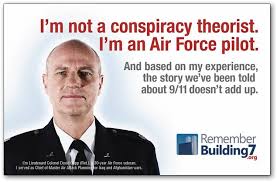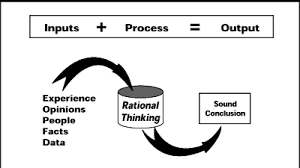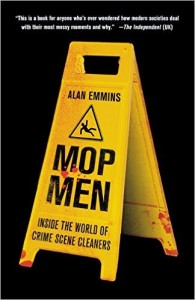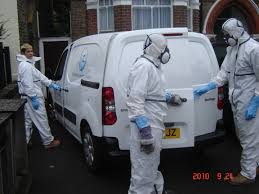 There’s no doubt some professional bloggers make massive amounts of money online. A few internet entrepreneurs have hundreds of thousands of followers and earn millions of dollars annually. These are not lucky gals and guys, like lottery winners. Profitable bloggers are intelligent, strategic, resourceful, ambitious, credible, likable, and above all, generous. And they have one common secret—the coin’s not in the blog.
There’s no doubt some professional bloggers make massive amounts of money online. A few internet entrepreneurs have hundreds of thousands of followers and earn millions of dollars annually. These are not lucky gals and guys, like lottery winners. Profitable bloggers are intelligent, strategic, resourceful, ambitious, credible, likable, and above all, generous. And they have one common secret—the coin’s not in the blog.
So how do they do it?
First, let’s look at what blogs are and how they work. Then we’ll rip DyingWords apart to see what’s going on behind the scenes.
 Blogs started in the 90’s as web logs or individual diary entries on the Worldwide Web. The term got cut to blog. Here’s how blog king Darren Rowse of ProBlogger.com puts it:
Blogs started in the 90’s as web logs or individual diary entries on the Worldwide Web. The term got cut to blog. Here’s how blog king Darren Rowse of ProBlogger.com puts it:
“It’s really quite simple. A blog is a type of website that is usually arranged in chronological order from the most recent ‘post’ (or entry) at the top of the main page to the older entries towards the bottom.”
Today, blogs cover pretty well every topic. News. Politics, Sex & Religion. Sports. Arts & Entertainment. Cats & Dogs. Cars. Beauty. Fashion. Travel. Games. Gardening. Garden Gnomes. Science & Technology. Lifestyles. Crafts. Men’s Erectile Dysfunction & Women’s Shoes. Living on Mars. Online shopping. Cigars. Wine. Marihuana. Books, Blogs, & Writing. And don’t forget Duct Tape and Danish Ditch-Digging.
Some bloggers make money. Most don’t. And the big guns in the blogosphere make it big by doing two things exceptionally well. They have huge audiences and have multiple products for sale—especially teaching their writing and blogging knowledge online to a multi-million audience of active bloggers and writers.
 I’ve spent the past three weeks taking online courses in blogging and relevant stuff. One course is Tribe Writers with Jeff Goins through his site GoinsWriter.com. I began following Jeff when I started blogging. Back then, he was struggling to break the thousand mark on his subscriber list. I liked him. Jeff’s honest, knowledgeable, and exceptionally generous. In under four years, Jeff built a monster following and developed multiple products. Jeff teaches writers about writing and he’s good at it.
I’ve spent the past three weeks taking online courses in blogging and relevant stuff. One course is Tribe Writers with Jeff Goins through his site GoinsWriter.com. I began following Jeff when I started blogging. Back then, he was struggling to break the thousand mark on his subscriber list. I liked him. Jeff’s honest, knowledgeable, and exceptionally generous. In under four years, Jeff built a monster following and developed multiple products. Jeff teaches writers about writing and he’s good at it.
 Another cool dude I follow is Jon Morrow of BoostBlogTraffic.com and GuestBlogging.com. Jon’s also the veteran editor with Brian Clark at Copyblogger.com. His blogging career has made him a millionaire. Jon’s got one unfair disadvantage the rest of us don’t—he’s a quadriplegic and works from a wheelchair. But Jon doesn’t make his money directly from his blogs. He teaches bloggers about blogging.
Another cool dude I follow is Jon Morrow of BoostBlogTraffic.com and GuestBlogging.com. Jon’s also the veteran editor with Brian Clark at Copyblogger.com. His blogging career has made him a millionaire. Jon’s got one unfair disadvantage the rest of us don’t—he’s a quadriplegic and works from a wheelchair. But Jon doesn’t make his money directly from his blogs. He teaches bloggers about blogging.
 Mariah Coz is a young lady from Femtripreneur.co who’s using her blog to sell online teaching courses—specifically webinars—and she’s making incredible returns. I “met” Mariah through the Teachable.com group and I have to say I’m impressed all to hell with her drive and delivery. If you want to get motivated about the potential earnings from running a targeted blog site and developing online training courses, you gotta listen to what Maria Coz will tell you — for free.
Mariah Coz is a young lady from Femtripreneur.co who’s using her blog to sell online teaching courses—specifically webinars—and she’s making incredible returns. I “met” Mariah through the Teachable.com group and I have to say I’m impressed all to hell with her drive and delivery. If you want to get motivated about the potential earnings from running a targeted blog site and developing online training courses, you gotta listen to what Maria Coz will tell you — for free.
Now you’re probably wondering what an old guy like me is doing hanging around people younger than my kids. Well, it’s because these impressive movers & shakers knew something I didn’t—and that’s how bloggers really make money.
 Their common secret is not that complicated. It just takes immense time, enduring energy, and a proven system to build a large blog subscriber list and the initiative to create a number of quality-content products. Then, they use their blog list in driving qualified traffic to internet portals where they sell their products.
Their common secret is not that complicated. It just takes immense time, enduring energy, and a proven system to build a large blog subscriber list and the initiative to create a number of quality-content products. Then, they use their blog list in driving qualified traffic to internet portals where they sell their products.
It’s a numbers game.
Whoever has the biggest list and most quality-content products—at the right price point—wins.
So where does DyingWords fit into this? Well, a tiny fish in an immense ocean.
For now.
 But I’ve learned something from the past few weeks of paying people like Jon, Mariah, and Jeff to teach me their information — there’s a predictable formula to this blogging numbers game.
But I’ve learned something from the past few weeks of paying people like Jon, Mariah, and Jeff to teach me their information — there’s a predictable formula to this blogging numbers game.
Here it is. If you do this—AND DO THIS RIGHT—the rule of thumb goes like this:
One dollar per month. Times the names on the subscriber list. Times the number of saleable products. Equals income.
I see what Jeff Goins is doing. He openly divulges that his list is over a hundred thousand and a look at his website indicates Jeff has about ten different products for sale through online books and courses. Applying the formula to Jeff Goins’s blogging business…
$1.00 X 1 month X 100,000 subscribers X 10 products = $1,000,000.00 per month.
Yep. Twelve million bucks a year.
 Jon Morrow holds his numbers closer to his chest. He probably has half a million subscribers and at least six expensive stand-alone products on three different blog sites.
Jon Morrow holds his numbers closer to his chest. He probably has half a million subscribers and at least six expensive stand-alone products on three different blog sites.
Mariah Coz is super-candid about her income. Her goal for the end of 2015 is 15,000 on her mailing list and she just pre-sold a new online course to a pile of followers for a total of $233K. Maybe I’m a sucker, but I saw her screenshots.
Mariah, Jon, and Jeff represent entrepreneurs who use their blog credibility to parlay a variety of products and services into cash. Here’s a list of the least—to most—profitable streams of revenue that comes from blogging exposure:
11. Direct merchandising — selling hats, t-shirts, and beaded Kokopelli key-fobs.
10. Donations — relying on goodwill or subscriptions to support blog content.
9. Sponsorship — backed by corporations.
8. Blog networks — paid to write other blog posts / ghostwriting.
7. Blog flipping — selling your blog list as an entity.
6. RSS advertising — links to other parties’ products.
5. Adsense — Google or social media advertising.
4. Affiliates — kickbacks from Amazon or other online marketers.
3. Freelance writing — paid articles for The Huffington Post, etc.
2. Speaking & consulting — paid for appearances and personal coaching.
1. Digital assets — selling books, courses, and webinars.
Yes, clever and credible people are getting wealthy selling products through a large following they’ve built by blogging.
So how’s Garry Rodgers and his little DyingWords blog making out?
Well, I’m happy to share this because it might give you a measuring stick and some motivation or encouragement.
 I started the DyingWords blog in June 2012. I’ve been at it for three and a half years. The first three were hit & miss with irregular posts and only one product for sale – a novel that I didn’t actively promote after its initial run. My purpose of blogging was to raise my profile as an authoritative author, hoping one day I’d get connected and make some decent money through crime writing.
I started the DyingWords blog in June 2012. I’ve been at it for three and a half years. The first three were hit & miss with irregular posts and only one product for sale – a novel that I didn’t actively promote after its initial run. My purpose of blogging was to raise my profile as an authoritative author, hoping one day I’d get connected and make some decent money through crime writing.
Over time, I built a backlist of blog posts and experimented with content. I learned the craft of blog writing and began to get noticed. I played with social media and networked with other bloggers and influencers. One-by-one-by-one, people signed my email list.
I got serious this past July. I buckled down to really learn how the blogging business works and I wrote full time—with a plan—blogging being the core of my internet presence.
Things changed.
On July 1st, my internet traffic was good. My mailing list had 504 subscribers. My Alexa Ranking was 2,940,467 and rising. By the end of November—five months later—my Alexa ranking increased 46% to 1,587,952. But my email subscribers leaped to 1,373. Two hundred and seventy-four percent!
WTF happened?
 We’ll, I’d built an attractive platform and learned more about effective list building. Other things occurred. I began getting invites for guest posts on other blog sites and I hosted a few influential folks on my own. I spent more time on social media and it generated talk. Word-Of-Mouse, so to speak.
We’ll, I’d built an attractive platform and learned more about effective list building. Other things occurred. I began getting invites for guest posts on other blog sites and I hosted a few influential folks on my own. I spent more time on social media and it generated talk. Word-Of-Mouse, so to speak.
Then… right outa the fricken blue… The Huffington Post cold-called, offering me a paid gig to write a feature article on the world’s biggest blog. Then, they liked what they saw and took me on board as a regular contributing member of “The Huff Post Signature Blog Team”. Check out my latest post on today’s Huff titled Can You Beat The Polygraph. Or check out the blogs I’ve done for them now. Click Here
My platform elevated to appearing on the Huffington Post. Their website has an Alexa Ranking of 56. I got in front of millions of viewers.
Like—you just can’t buy that exposure.
The Huffington Post opportunity came because I took my writing seriously—as a professional. I’d committed myself to full-time, professional writing.
But something’s missing from the equation.
Money.
 Now, here I’m standing on my platform—shouting out to my peeps and they’re shouting back, Hey, Garry! You look good and you sound good and your audience is growing. But you only got one product to sell. When’re you gonna put out some more stuff? That’s what it takes to make a living off this schtick, you know!.
Now, here I’m standing on my platform—shouting out to my peeps and they’re shouting back, Hey, Garry! You look good and you sound good and your audience is growing. But you only got one product to sell. When’re you gonna put out some more stuff? That’s what it takes to make a living off this schtick, you know!.
Hang on. I’ve spent the last six months building a stream of new products to come online over the next six months and most of the heavy work’s already done.
One is a new 80K word novel titled No Life Until Death. Eight are guides on Crime Writing. One is a guide on Blogging. And I still have the JFK manuscript lurking out there. So that’s ten—maybe eleven products—twelve if you take in my first novel No Witnesses To Nothing. Plus, I’m seriously thinking of getting into the online course market because that’s where the really big return seems to be. And, as I write – another balloon was floated.
Hey, Mister Future Money-Bags — How’s that fit into your fancy formula?
 Well, so far, it seems to fit fine. In the month of November, I got an Amazon royalty check for $100.00 and the Huff paid me $1,000.00 USD for their feature article. With the exchange rate, that converts to $1,385.00 Canadian.
Well, so far, it seems to fit fine. In the month of November, I got an Amazon royalty check for $100.00 and the Huff paid me $1,000.00 USD for their feature article. With the exchange rate, that converts to $1,385.00 Canadian.
Let’s see…
$1.00 X 1,373 subscribers X 1 online product = $1,373.00
Yup. Purdy akkerate.
 Remember, the formula relates to online digital products and other stuff you need to have going—speaking, freelance writing, affiliates, advertising, etc. All 11 steps contribute to the formula and support the income statement. It’s part of the formula. You need to be doing related side jobs in addition to digital books—and putting in fourteen hours a day, seven days a week.
Remember, the formula relates to online digital products and other stuff you need to have going—speaking, freelance writing, affiliates, advertising, etc. All 11 steps contribute to the formula and support the income statement. It’s part of the formula. You need to be doing related side jobs in addition to digital books—and putting in fourteen hours a day, seven days a week.
But you’d never, EVER, be able to work the formula if you didn’t anchor it to a free blog that sells your voice.
Think about the potential with six products.
$1.00 X 1,373 subscribers X 6 quality-content, online products = $8,238.00
Imagine doubling your mailing list?
$1.00 X 2,746 subscribers X 6 quality-content, online products = $16, 476.00
Quadruple your list? Quadruple your products? Quadruple your average product price?
Does this sound like a pipe-dream? A get-rich-quick scam? Something that could only happen to someone else?
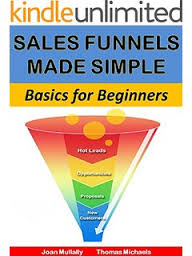 Nope. It’s happening out there.
Nope. It’s happening out there.
I’m not drinking some kinda Jeff-Jon-Mariah Kool-Aid. These people are pulling it off, but they aren’t relying on a stack of 99-cent eBooks as their army of products.
Sure, they’re using some of their free and cheaper products as lead magnets and funnel books which have strategic purposes. Then they’re doing a mix of $4.99 guides. $9.99 eBooks. Some traditional publishing. Some freelancing. Some speaking and consulting fees. Lots of affiliates. Hundred-dollar-a-pop, hour-long webinars in front of two hundred eager people. And two, three, or four online courses at $499.00 each with upsells to $999.00 and even $2,500.00 if you want a couple hours of one-on-one with them.
What’s it take to get onto their train? Here’s some suggestions on how you can really make money blogging:
- Be passionate!!!
- Understand the system.
- Network with other writers, bloggers, and influencers.
- Write clean, concise, credible, consistent content in your posts.
- Create multiple, quality-content products for sale online.
- Build your mailing list.
- Know your audience. Engage. Give them what they want and need.
- Work your ass off.
- Produce and sell lots of quality-content products.
- Be highly professional. There’s no secrets on the net.
- Never quit. It takes time.
- Multiply your reach and develop multiple streams of income.
- Never stop learning.
- And—above all—consistently blog with your own unique voice.
I think I’ll give ‘er a try.
BTW… please subscribe to DyingWords.net! Just Click Here











